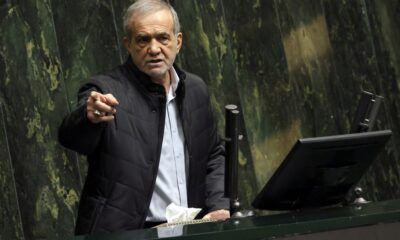INTERNACIONAL
US withdrawal from Syria would put ‘whole region at risk,’ allow Iran to ‘sow’ more discord, expert warns

Recent reports have raised the specter of a U.S. withdrawal from Syria, and while brushed off by the Biden administration, one expert made clear that if such a withdrawal ever happened, the consequences would be disastrous for not only the region but the U.S. and its allies as well.
Sinam Sherkany Mohamad, the representative of the Syrian Democratic Council, the political wing of the Syrian Democratic Forces (SDF), told Fox News Digital that a U.S. withdrawal from the region would have lasting effects.
«If the U.S. withdrew from Syria, our whole region would be at risk. We currently are guarding over 12,500 hardened ISIS fighters who would be released back to the battlefields in the Middle East, North Africa and beyond,» she said.
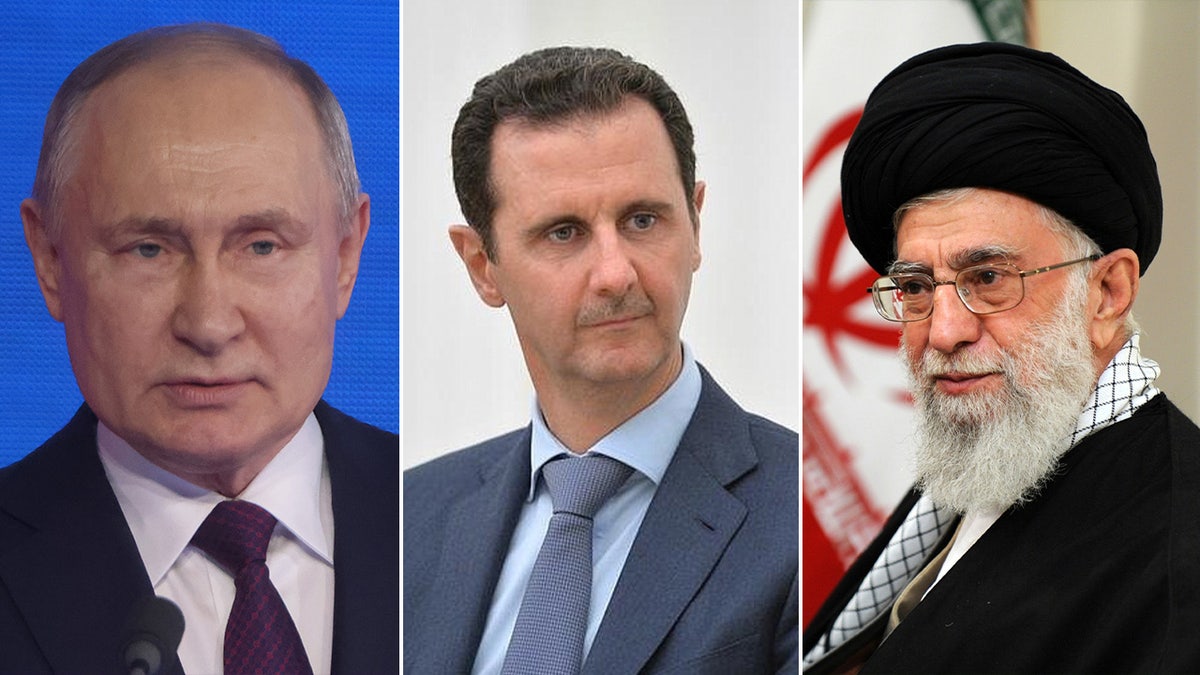
From left: Russian President Vladimir Putin, Syrian President Bashar al-Assad and Iran’s Supreme Leader Ayatollah Ali Khamenei. (Fox News/Getty Images)
SLAUGHTER IN SYRIA AS ASSAD, RUSSIA TAKE ADVANTAGE OF WAR IN GAZA: ‘MOST VIOLENT BOMBING OF CIVILIANS’
«[A] U.S. withdrawal would also mean that hundreds of thousands of persecuted minorities who were critical in ending the violent ambitions of ISIS would be subject to retaliation by the Assad regime, and by a Turkish government that is hostile to religious and ethnic minorities,» said Mohamad. «This would mean the continued persecution of Christians and other religions, total loss of the current equality of women, and the ethnic cleansing of protected minorities.»
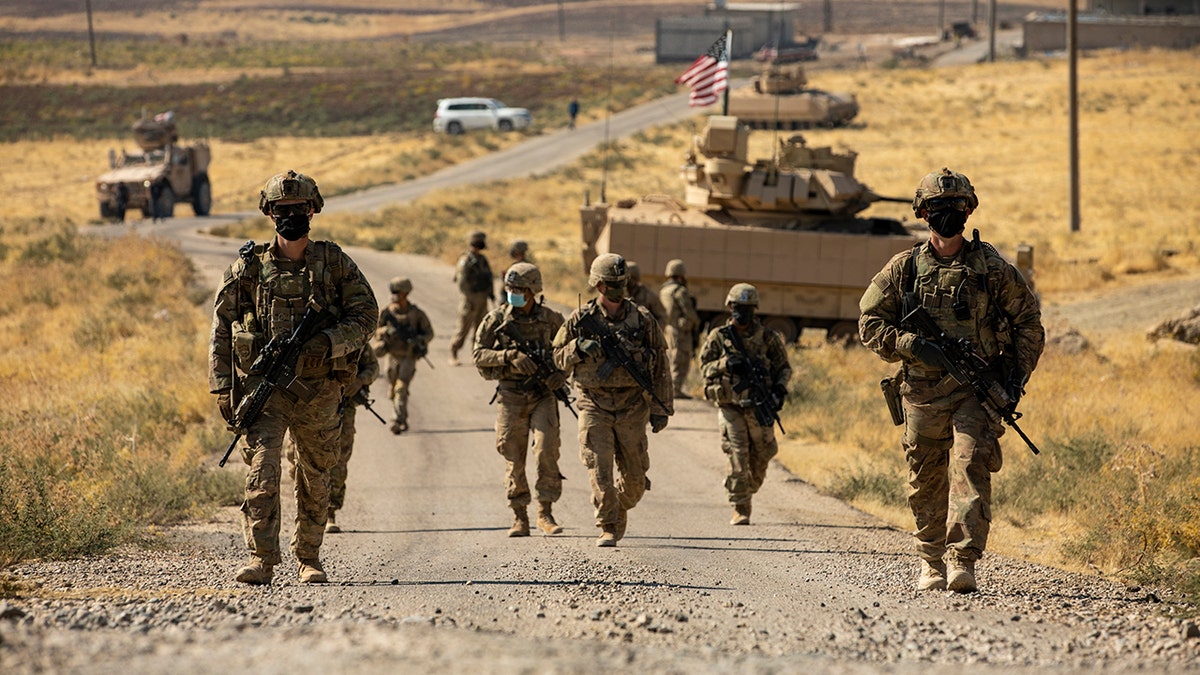
Soldiers with Alpha Troop, 1st Battalion, 6th Infantry Regiment, 2nd Armored Brigade Combat Team and 1st Armored Division make their way to an oil production facility to meet with the management team in Central Command area of responsibility on Oct. 27, 2020. The soldiers were in Syria to support Combined Joint Task Force-Operation Inherent Resolve mission. (U.S. Army photo by Spc. Jensen Guillory)
The U.S. has roughly 900 troops stationed in Syria to counter ISIS and Iranian-backed militias. It also works closely with the SDF to prevent the resurgence of the Islamic State and carries out counterterrorism operations in the region.
A senior U.S. official told Fox News earlier this week that the U.S. has no plans to withdraw its 900 troops from Syria. Additionally, a State Department spokesperson told Fox News Digital that the U.S. is in the country to ensure the enduring defeat of ISIS and continues to work with local partners to maintain pressure on the jihadist group.
The U.S. has no changes planned for its mission in Syria, the spokesperson said.
Mohamad told Fox News Digital that Iran has sought for years to «control the historic capitals of the Levant, seeking influence and control in Iraq, Syria, and Lebanon.» She explained, «The Autonomous Region is of vital strategic importance to blocking Iran’s strategy to pursue regional hegemony in the Middle East. If Iran succeeds in removing the SDF, it would be able to continue to sow discord across the region, sponsoring terrorist attacks on countries, targeting U.S. military facilities, and threatening its allies.»
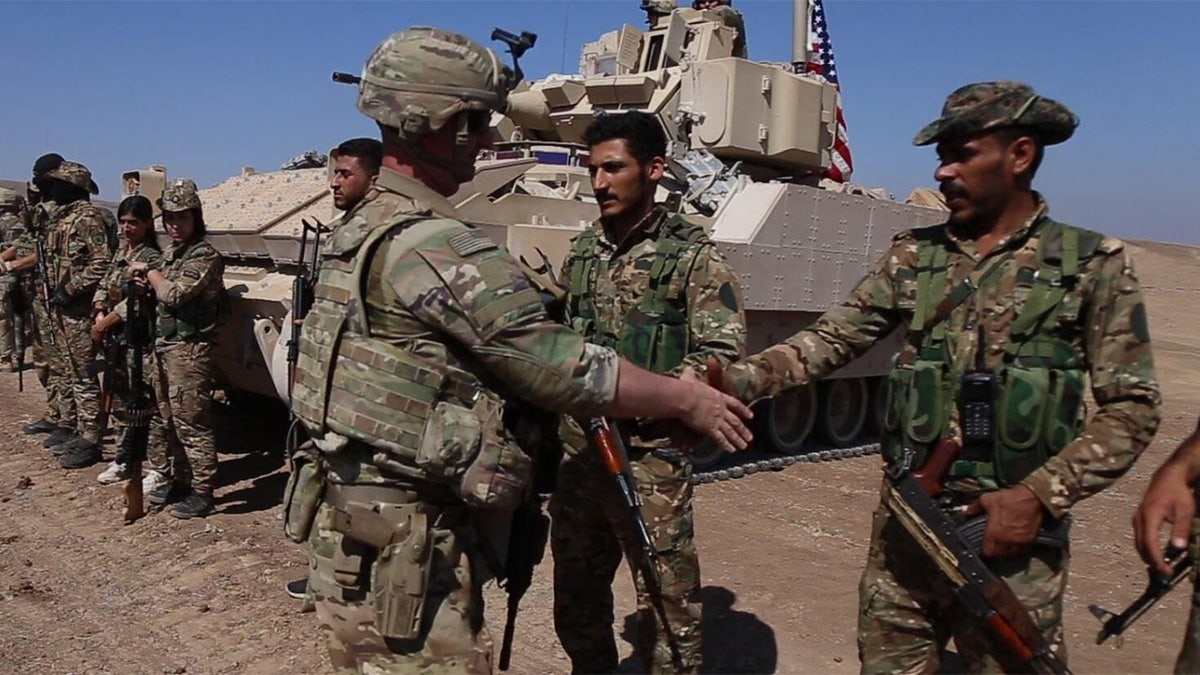
US forces with members of the YPG/SDF in the Qamisli district in the Al-Hasakah province, Syria on August 18, 2023. ((Photo by Hedil Amir/Anadolu Agency via Getty Images))
The Institute for the Study of War said in a report last year that Iran, Russia and the Syrian regime are «coordinating a coercive campaign to expel the United States from Syria,» possibly as part of a «broader political-military campaign to bolster the Assad regime’s international legitimacy and expand Iranian-Russian control over Syrian territory.»
The SDF said in a recent press release that its anti-terrorism units, along with international coalition partners, conducted an operation in Deir Ezzor in early January, targeting and killing senior ISIS leader Muhammed Atiyah.
Atiyah, also known as Abu Mahmoud, was responsible for carrying out assassinations against security and military personnel in the region, according to the SDF.
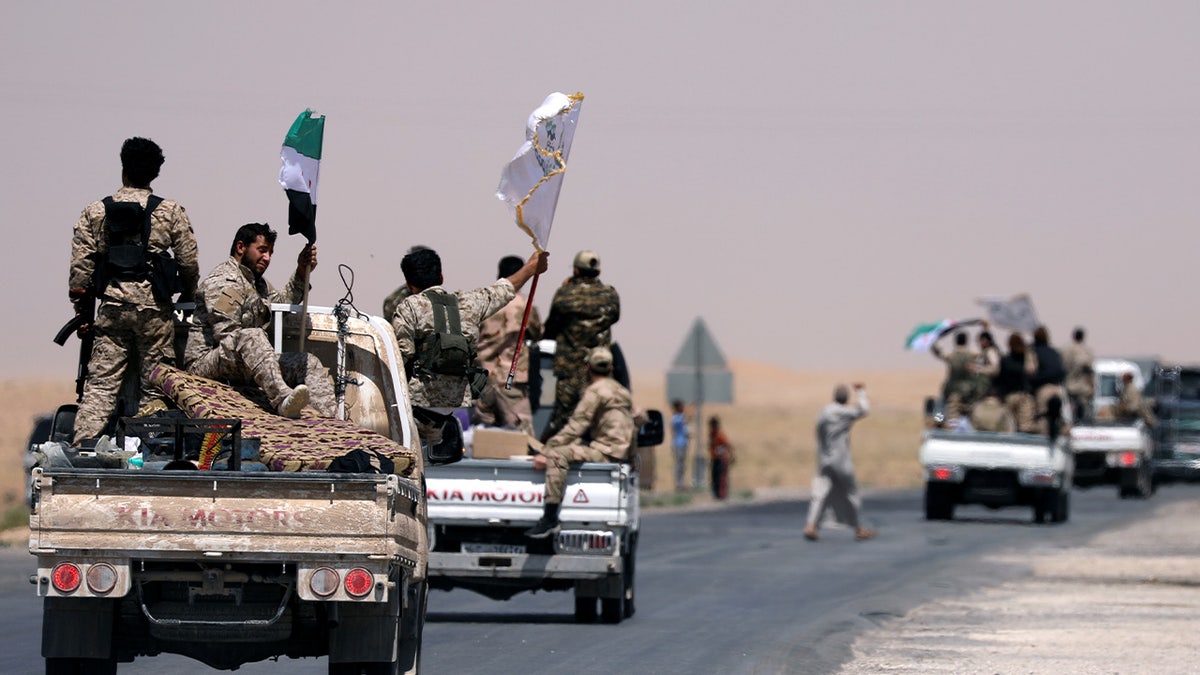
Syrian Democratic Forces fighters are seen on their way to Raqqa, Syria, on June 6, 2017. (REUTERS/Rodi Said TPX IMAGES OF THE DAY)
Mohamad said ISIS’ activities have significantly increased in Deir Ezzor and the Syrian desert regions, specifically Al-Sukhnah and Palmyra.
«The Syrian Democratic Forces continue special operations focused on targets belonging to ISIS in Deir Ezzor, Raqqa and the entire region. Within two weeks, there were three operations by the Syrian Democratic Forces in participation with the international coalition against ISIS cells, during which ISIS officials were killed in Al-Hawl, Deir Ezzor, and five individuals belonging to ISIS subversive cells were arrested,» she noted.
US MILITARY SHOOTS DOWN TURKISH DRONE AFTER COMING TOO CLOSE TO TROOPS IN SYRIA
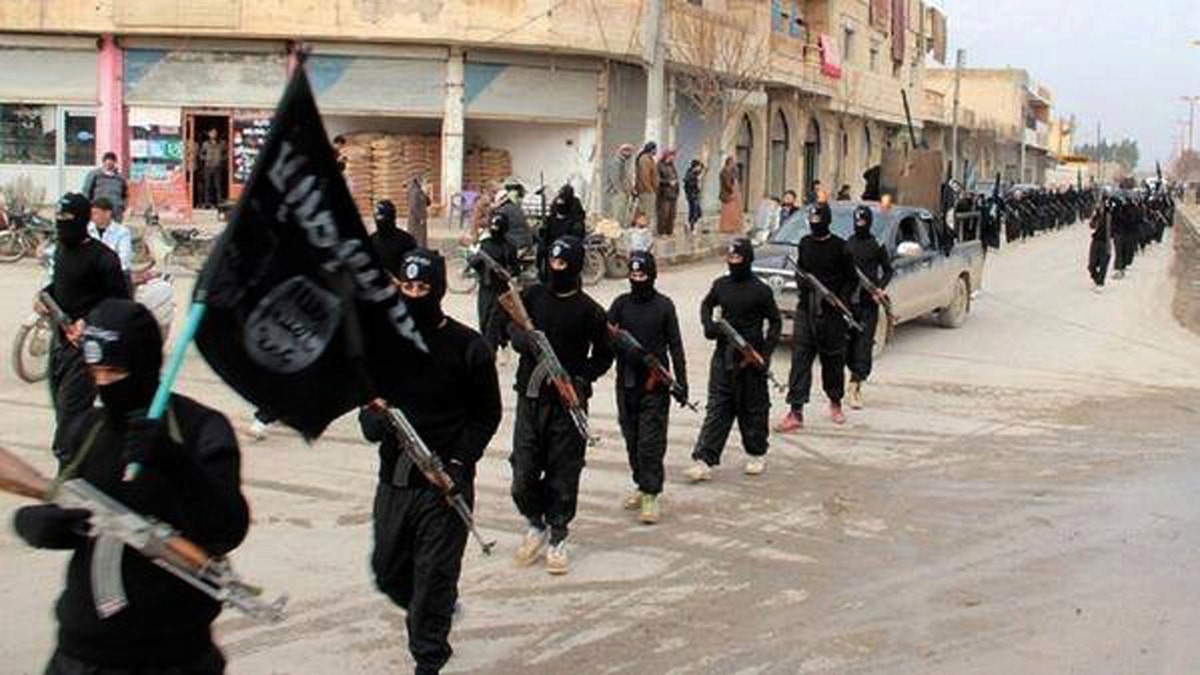
ISIS in its former «caliphate» capital of Raqqa, Syria (AP)
«If tensions continue in the region and Turkish and Iranian attacks continue, we expect that the activity of ISIS cells will continue to increase, as they always benefit from the tensions and bombings caused by Iranian and Turkish strikes.»
Turkey has ramped up its airstrikes in northern Syria and Iraq against Kurdish militants, destroying 29 bunkers, shelters, caves and oil facilities in the two regions earlier this month, according to Turkey’s defense ministry.
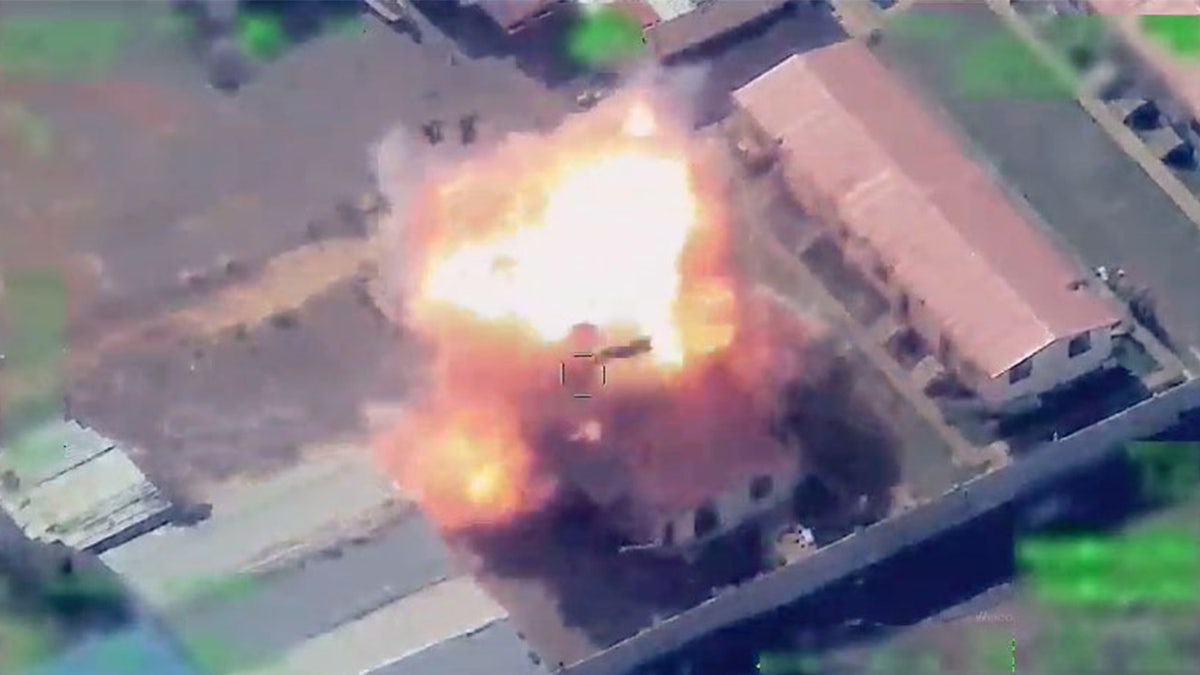
A screen grab captured from a video shows Turkish National Intelligence Organization destroying 23 targets, including critical infrastructure facilities, checkpoints and so-called military points used by PKK and YPG (PKK listed as a terrorist organization by Turkey, the U.S. and the EU and YPG, which Turkey considers the extension of PKK in Syria) in Syria on Jan. 14. (TUR National Intelligence Org/Handout/Anadolu via Getty Images)
Turkey considers the Kurdistan Workers’ Party (PKK) and the People’s Protection Units (YPG), a Syrian branch of the PKK, as terrorist groups. The PKK is a U.S.-designed foreign terrorist group, but the U.S. supports the YPG because it has played an integral role in the fight against ISIS.
David Adesnik, a senior fellow and the director of research at the Foundation for Defense of Democracies, told Fox News Digital earlier this month that there has been a historic animosity between Turks and Kurds.
«There’s been effectively a civil war raging in Turkey for a generation, pitting the Kurdish minority there against the government. Initially, the current government, or led by [president Recep Tayyip] Erdogan, was more open to reconciliation, but over time, took a more nationalist bent and became very anti-Kurdish,» he explained. «And especially, it seemed that the Kurds were carving out an ever larger domain of autonomy within northern Syria and that sort of struck Erdogan as intolerable. And he also sees no distinction between the Kurds in Turkey, who are fighting the state and the Kurds in Syria, who are fighting the Islamic State and others.»
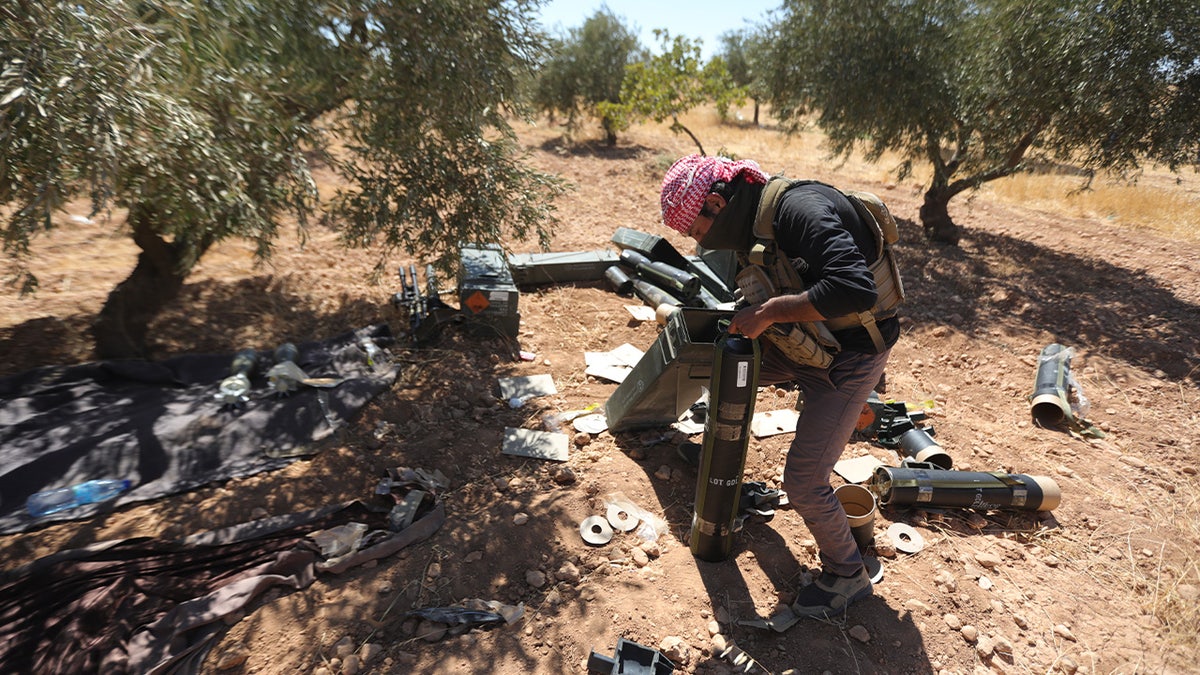
Operations against the PKK and YPG carried out by Arab tribes in Deir ez-Zor continue in rural areas of Manbij in Syria on Sept. 6, 2023. (Bekir Kasim/Anadolu Agency via Getty Images)
Adesnik said that the U.S. has tried to make an operational distinction that even if they consider some of the Kurds in Turkey as terrorists, they need to work with the Syrian Kurds.
CLICK HERE TO GET THE FOX NEWS APP
«It’s hardly a perfect arrangement,» he noted.
INTERNACIONAL
Kennedy relaciona el brote de sarampión en Texas con una mala dieta y poco ejercicio
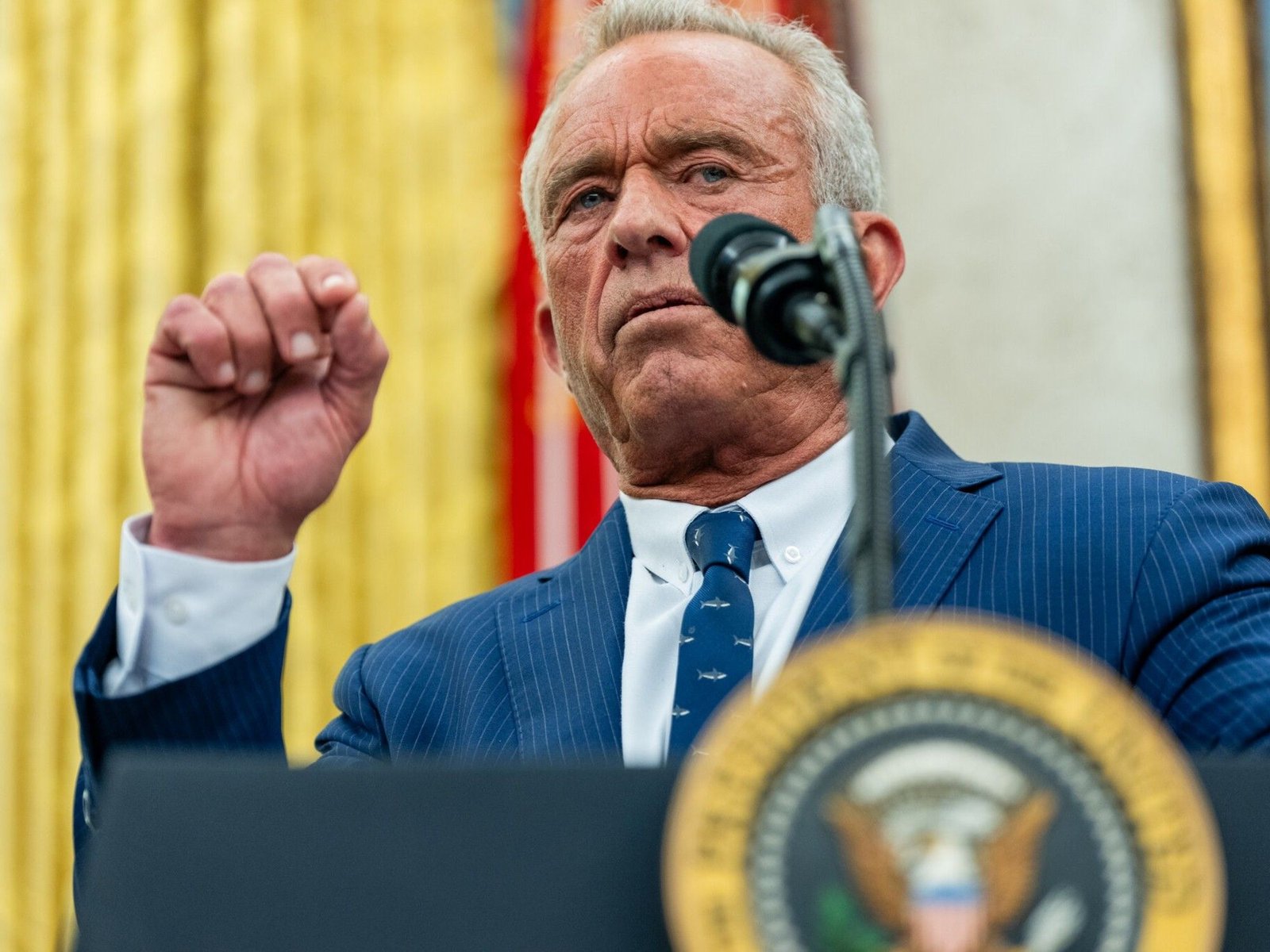
Opcional
Alimentación
INTERNACIONAL
Elecciones en Groenlandia: ganó un partido que busca la independencia gradual de la isla

«El futuro gobierno tendrá que enfrentar una enorme presión de Trump»
Qué quiere Trump con Groenlandia
INTERNACIONAL
La inflación se dispara en Brasil y toca su nivel más alto desde 2023

Aumento en el precio de la electricidad en los hogares
La economía, para abajo
-
POLITICA2 días ago
Santiago Cúneo: «El país necesita más gobernadores como Quintela» y lanza su candidatura para 2025″
-
POLITICA8 horas ago
Lilia Lemoine se peleó con Marcela Pagano y Rocío Bonacci por dar quórum a una iniciativa del peronismo
-
POLITICA2 días ago
El Gobierno confirmó que Milei no viajará a Bahía Blanca y esquivó las críticas de Kicillof: “No es momento”







